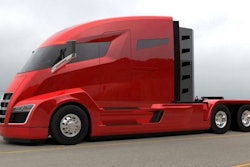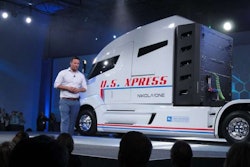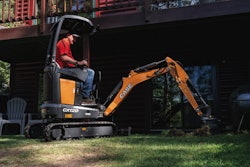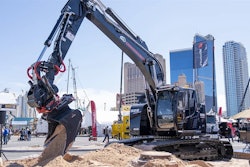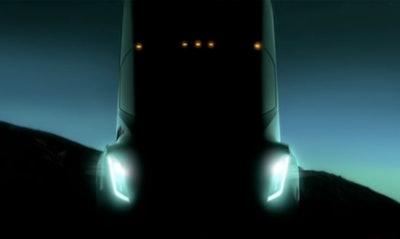
The pending tidal wave of electric trucks that may or may not ever see the highway presents a unique set of challenges for tire makers: Torque management.
In an interview with sister site CCJ during the company’s global summit for sustainable mobility in Montreal Tuesday afternoon, Michelin Americas Truck Tires Chief Operating Officer Ralph Dimenna said innovations in trucking have will have an impact on suppliers from the bumper to the underride guard.
“I’m positive the [electric truck] movement will have an impact on tires of the future,” he says of electric motors that can more than double the amount of torque of their diesel counterparts. “Do you change [tire] sizes? Do you change the rubber compounds? Do you tune the [electric motor] down? You try and work through all that.”
“We need to figure out our materials, the compound, to compensate for ]the added torque],” adds Serge Lafon, head of Group Michelin Truck.
Thanks to its deep ties to passenger cars, Michelin has experience with the gold standard of electric mobility: Tesla, who expects to debut an electric tractor in three months.
“This is a totally different application,” Dimenna says of the electric semi, “but we have that internal knowledge that we can carry over.”
The challenge comes, he says, in striking a balance for fleets that offers the right amount of green energy without driving up their cost of ownership.
“There’s a lot emotion and passion on the car side of the business in terms of how you feel when you drive a Tesla,” he says. “We’re still, on the truck side, very much on the functional [side].”
Tesla’s cars, in general, offer a limited range, but owners – drawn in by eliminating the car’s carbon footprint and sleek design – see mileage limitations as an acceptable trade-off. Truck owners, Dimenna says, will be far less likely to embrace a similar sacrifice.
“On the truck side, we’re still trying to figure out what that ‘no sacrifice’ looks like,” he says. “People who are driving these trucks are depending on these vehicles everyday to deliver freight.”

